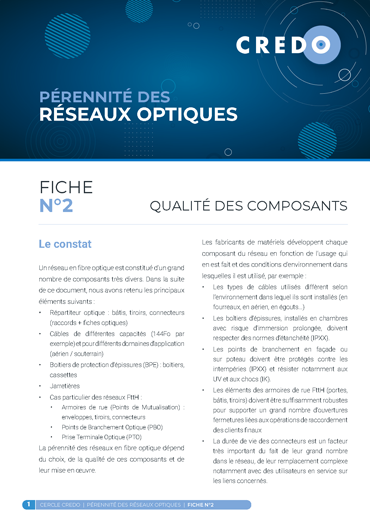La pérennité des réseaux en fibre optique dépend du choix, de la qualité de ces composants et de leur mise en oeuvre. In this sheet we are interested in the main elements.
The finding:
A fiber optic network is made up of a large number of very diverse components. In the remainder of this document, we have retained the following main elements:
- Optical splitter: frames, drawers, connectors (fittings + optical plugs)
- Cables of different capacities (144Fo for example) and for different fields of application (overhead / underground)
- Splice protection boxes (BPE): boxes, cassettes
- Garters
- Special case of FttH networks:
- Street cabinets (Pooling Points): envelopes, drawers, connectors
- Optical Branch Points (PBO)
- Optical Terminal Port (PTO).
The durability of fiber optic networks depends on the choice, the quality of these components and their implementation.
Hardware manufacturers develop each component of the network according to the use made of it and the environmental conditions in which it is used, for example:
- The types of cables used differ according to the environment in which they are installed (in ducts, overhead, in sewers, etc.)
- Splice boxes, installed in rooms with risk of prolonged immersion, must comply with sealing standards (IPXX).
- The connection points on the facade or on the pole must be protected against bad weather (IPXX) and particularly resistant to UV and shocks (IK).
- The elements of FttH street cabinets (doors, frames, drawers) must be robust enough to withstand a large number of openings and closings linked to end customer connection operations
- The service life of the connectors is a very important factor due to their large number in the network, their complex replacement in particular with users in service on the links concerned.
Download this practical whitepaper (in french only) by completing the form below:





